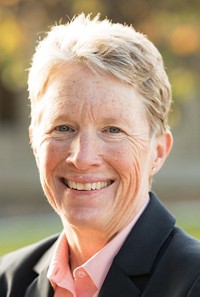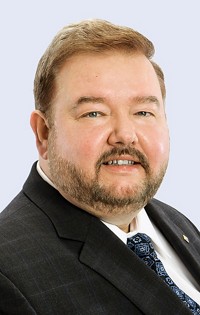Advertisement
Grab your lab coat. Let's get started
Welcome!
Welcome!
Create an account below to get 6 C&EN articles per month, receive newsletters and more - all free.
It seems this is your first time logging in online. Please enter the following information to continue.
As an ACS member you automatically get access to this site. All we need is few more details to create your reading experience.
Not you? Sign in with a different account.
Not you? Sign in with a different account.
ERROR 1
ERROR 1
ERROR 2
ERROR 2
ERROR 2
ERROR 2
ERROR 2
Password and Confirm password must match.
If you have an ACS member number, please enter it here so we can link this account to your membership. (optional)
ERROR 2
ACS values your privacy. By submitting your information, you are gaining access to C&EN and subscribing to our weekly newsletter. We use the information you provide to make your reading experience better, and we will never sell your data to third party members.
Policy
Take A Look At The New ACS PRF
by C. Gordon McCarty, ACS Board of Directors, and Edward J. J. Grabowski, Chair, ACS PRF Advisory Board
May 5, 2008
| A version of this story appeared in
Volume 86, Issue 18

TWO YEARS AGO, we wrote that the ACS Petroleum Research Fund (PRF) was 52 years old and in need of a thorough review (C&EN, Aug. 14, 2006, page 60). It was necessary to make sure that the research portfolio was strategically placed and organized in such a way that a research fund of PRF's size could have the impact it should in the current research climate. In early 2006, input was gathered from stakeholders throughout the scientific community. The PRF Advisory Board, the PRF Steering Committee, and the very capable PRF staff at ACS in Washington, D.C., received all of the information.
When the input was analyzed, it was clear that there was strong support for PRF to continue and expand its role in support of young faculty. Also, it was felt that PRF should have a clearer impact on fundamental research in the field of energy. With this in mind, the Advisory Board and the Steering Committee adopted a vision statement to guide them on their path forward: "The ACS Petroleum Research Fund will support innovative fundamental research, advanced scientific education, and the careers of scientists, to aid in significantly increasing the world's energy options."
During much of 2007, many more discussions involving the Advisory Board, the Steering Committee, and the staff led to some specific proposals, which were presented to the ACS Board for approval. Gone (almost) is the alphabet soup of PRF grants from prior years. Three new grant programs will start in 2009:
NEW INVESTIGATOR GRANTS will focus on providing start-up funding for scientists and engineers who are within three years of their first academic appointment. One program is for new investigators at Ph.D.-granting institutions, and a second program is for new investigators at primarily undergraduate institutions.
NEW DIRECTIONS GRANTS will focus on providing funds for scientists and engineers who have very limited or no preliminary results for a research project they wish to pursue. They should have the intention of using the PRF-driven preliminary results to seek continuation funding from other agencies.
UNDERGRADUATE RESEARCH GRANTS aim to provide funding for scientists and engineers at institutions with established nondoctoral programs of research.
Other new programs were proposed in 2007, but more information is needed before decisions can be made. Working groups of volunteer experts were established and have aided PRF in the search for new directions. The studies of two groups have led to other specific proposals that have recently been approved by the ACS Board. These two newest research programs to be included in the PRF portfolio are the following:
EXCEPTIONAL INNOVATION GRANTS will stimulate exceptionally innovative fundamental research in petroleum and related energy fields; provide "seed" funding for potentially high-reward research; provide a venue for testing novel concepts and/or addressing key energy-related science gaps; and populate the front end of the innovation pipeline with new technical concepts and leads.
STRATEGIC AND MULTIDISCiPLINARY RESEARCH GRANTS will address key technology barriers that, if overcome, would have a high impact; support use of a fundamental research approach that may be higher risk, require longer term solutions, and be both novel and nonincremental; and specifically address those barriers that require a multidisciplinary approach.
PRF is now better positioned to support the careers of scientists while also supporting some new and potentially rewarding areas of energy research. We have been addressing the need for a new governance structure and are in the midst of making major changes. The PRF Advisory Board will continue but will be divided into two major subgroups.
The scientific review of proposals will continue to be done by a group of scientists, but that group will henceforth be called the Scientific Review Committee of the PRF Advisory Board. A new group called the Program Committee of the PRF Advisory Board is being convened. This new group will be like the oversight boards of many other funding agencies. This group will guide program and portfolio performance in such a way that limited PRF resources can be applied to have the maximum impact on scientists and engineers and their research so that the fund makes progress toward achieving its vision.
The group will also monitor program performance so that rational decisions can be made to enhance existing programs, create new programs, or terminate ineffective programs. Balancing the application of the funds by scientific research discipline and ensuring appropriate allocation between research initiatives and educational programs will be another important responsibility of this group. These roles are very different from those of the other subgroup that is reviewing scientific proposals. The Program Committee will include members with experience in developing and implementing professional evaluation resources.
Change has indeed happened in the PRF world that will allow ACS PRF to better support the careers of scientists and engineers while also supporting some potentially very important energy research projects. We welcome your comments. Please send them to prfcomments@acs.org.
Views expressed on this page are those of the author and not necessarily those of ACS.




Join the conversation
Contact the reporter
Submit a Letter to the Editor for publication
Engage with us on Twitter